
After a long winter, spring is finally here. People everywhere are opening their windows to let in the fresh air, see the flowers bloom, and… get started on their spring cleaning.
If you’re wondering how to clean your window treatments, you’ve come to the right place. This comprehensive guide includes everything you need to know, from cleaning methods and tips to a detailed breakdown of how to clean all the different types of treatments in your home. In addition, you’ll learn what supplies you need and the best way to clean your window treatments quickly and efficiently, so you can enjoy the season and the beautiful view from your windows.
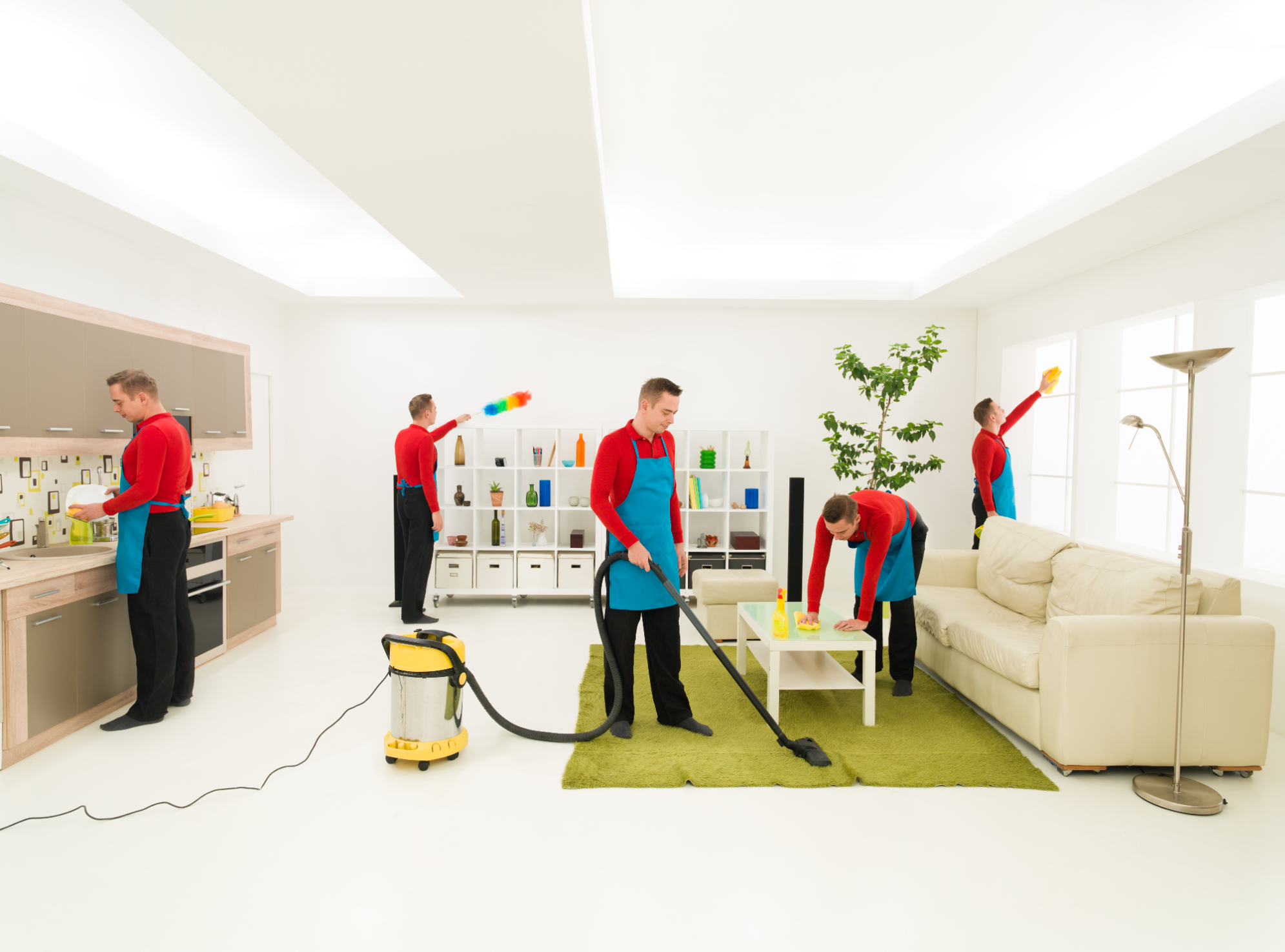
Why Clean Window Treatments?
When performing regular household cleaning, window treatments are often overlooked. But you may be surprised at the difference it can make. Window coverings like blinds, shades, curtains, and shutters can collect quite a bit of dust and dirt over time. Cleaning them regularly can drastically reduce the allergens in the air and your home, allowing you and your family to breathe easier. Plus, it makes your home look and feel cleaner and fresher and can help extend the life of your window treatments, too!
How Often Should Window Treatments Be Cleaned?
Most window treatments require very little maintenance. But, if you want to keep them looking their best, you should clean them regularly. Recommended cleaning frequency depends on the type of window treatments you have and the room where they are located. For example, treatments in the kitchen or bathroom may require more frequent cleaning than those in the bedroom or living room.
Further, coverings on windows often left open to let in fresh air may accumulate more dirt and pollen than those that remain closed. In general, you should lightly clean window treatments by dusting or vacuuming along with regular household cleaning and deep clean at least once per year.
📧 Never miss a post from the 3 Blind Mice blog!
Subscribe to our newsletter to receive window treatment tips, how-to, and special offers in your inbox.
"*" indicates required fields

What Supplies Do I Need to Clean Window Treatments?
The materials needed for cleaning window treatments vary depending on the cleaning method and the type of window treatment. However, some common supplies you will want to have on hand include:
- Feather duster, dusting wand, or dusting mitt
- Vacuum with a brush attachment
- Mild dish soap
- Mild laundry detergent
- Soft sponge, cloth, or towel
- Bucket
Window Treatment Cleaning Methods
Before diving into your spring cleaning, it’s important to make sure you know how to clean your window treatments properly. If not done correctly, it is possible to damage the material. Therefore, always reference your product manual for specific cleaning instructions when possible. One of these methods will likely be recommended.
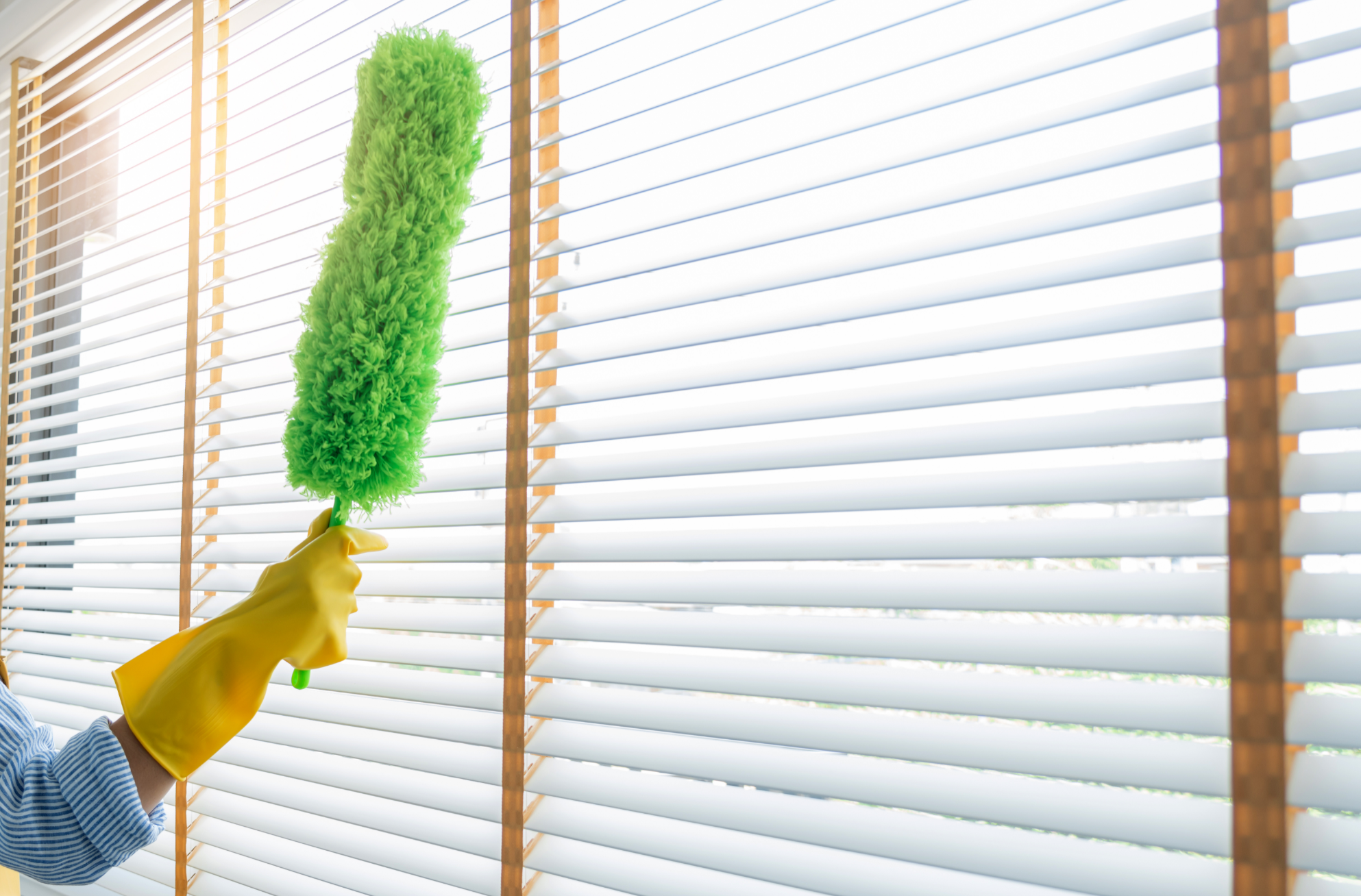
Dusting
Over time, a layer of dust or dirt can accumulate on all the surfaces in your home, including your window coverings. Many kinds of window treatments can be cleaned with a simple dusting. Use a feather duster, dusting wand, or dusting mitt to gently wipe away any dust, or blow it away using a can of compressed air or a hair dryer on a zero-heat setting.

Vacuuming
Another easy method to remove built-up dust and dirt on your window treatments is vacuuming. Use a soft brush attachment and sweep over blinds, shades, shutters, or draperies to quickly remove and trap away allergens.

Spot Clean
After dusting or vacuuming, you may notice some areas requiring deeper cleaning. In this case, you can use a spot-cleaning method on most window treatments. Take a damp sponge or soft cloth and dab gently. Do not rub or scrub aggressively, as this may cause damage. If necessary, use a mild soap or detergent.
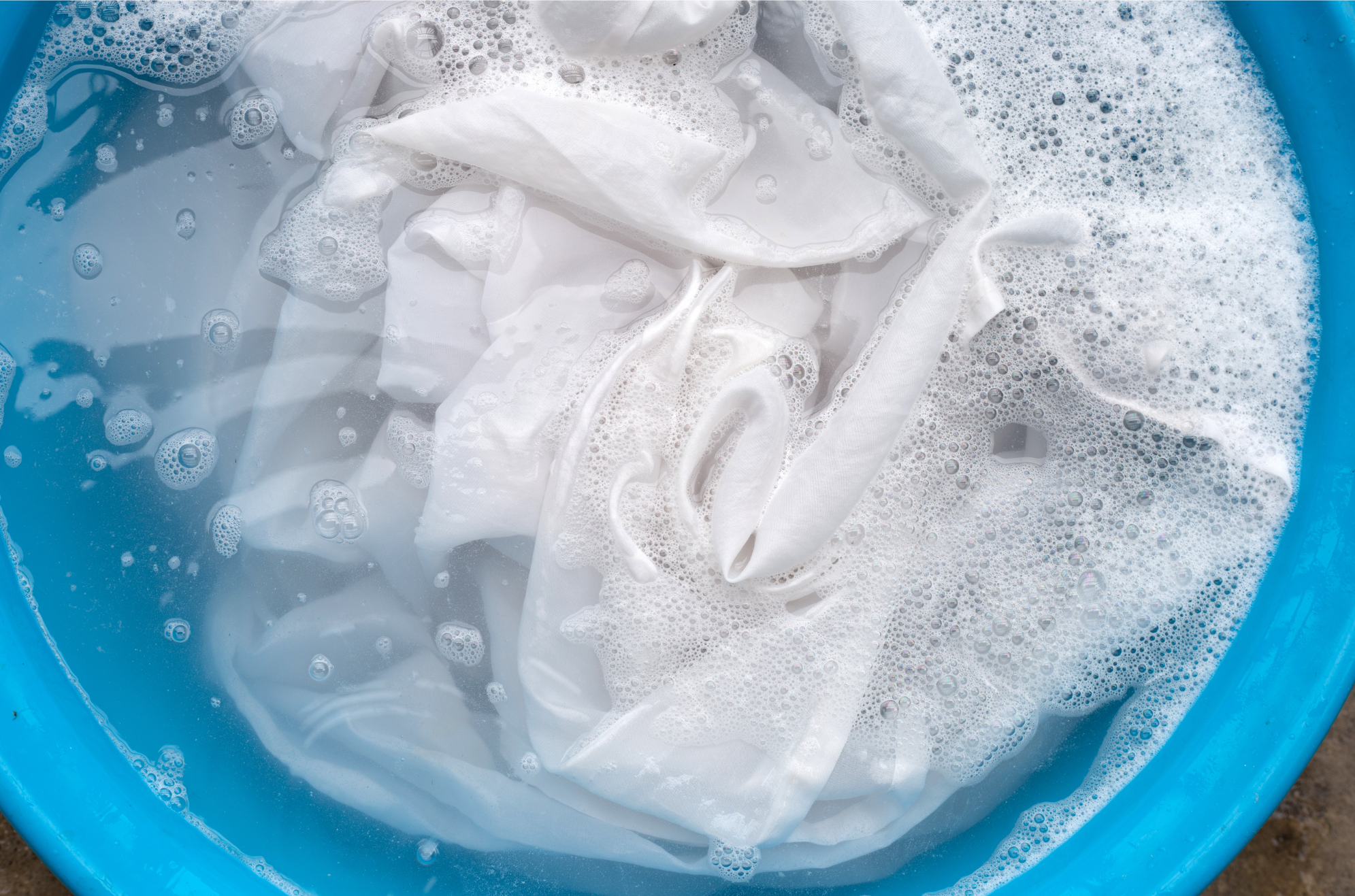
Washing or soaking
For an even deeper clean, some window treatments can be machine washed or soaked in water. Always check product labels or manuals for instructions to avoid damaging the material. Due to their size, a popular cleaning method is to soak them in the bathtub. First, fill your tub with water and add a mild detergent. Next, remove the window covering from the wall and immerse it entirely for up to an hour. Then, drain the water, rinse it clean, and hang it to dry.
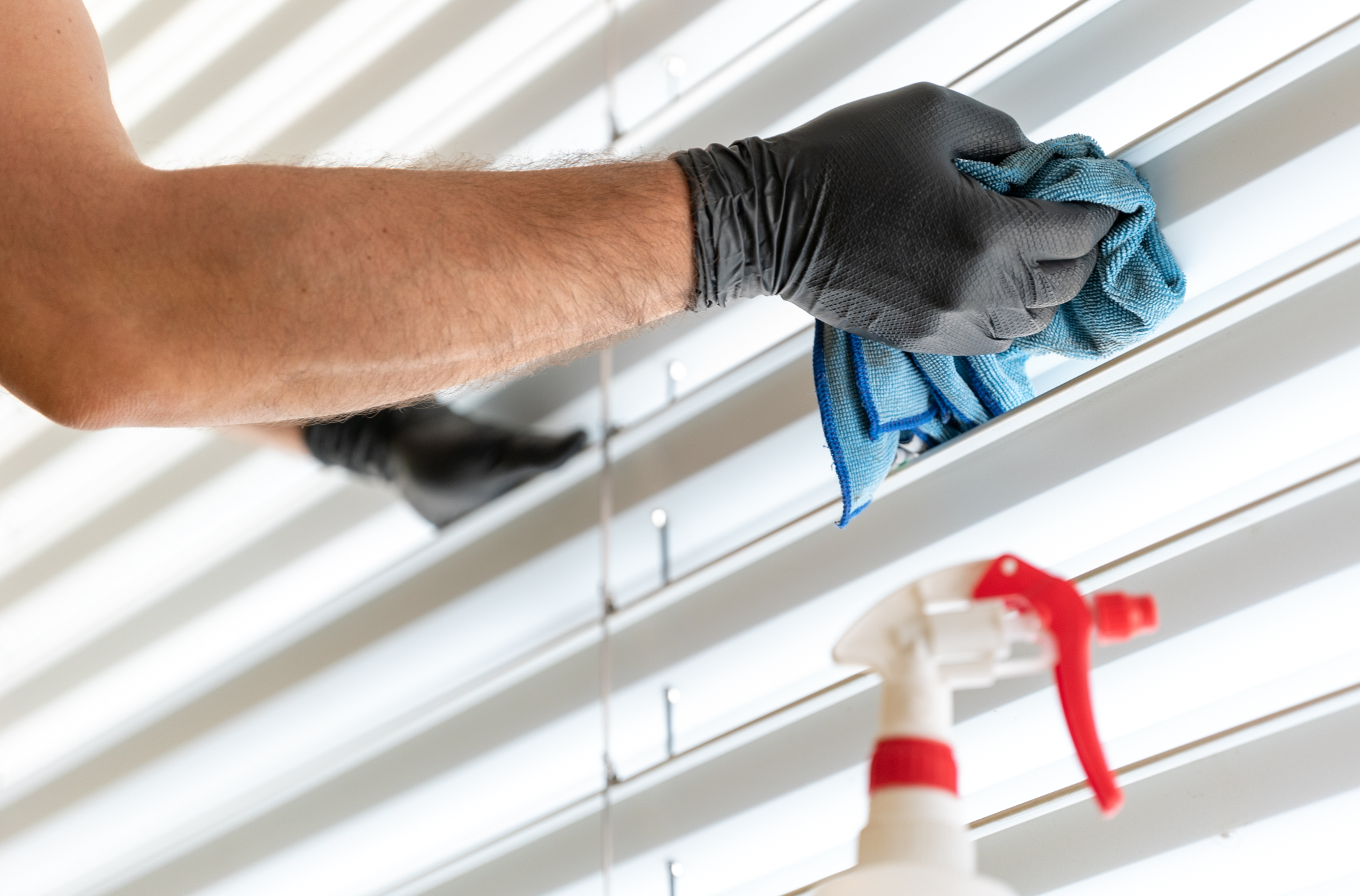
Professional Cleaning
While often not necessary, some people prefer cleaning their window treatments professionally. If you need help cleaning them properly or are worried about damaging or ruining the material, a professional can tell you the best method and handle all the dirty work.
How do you know which of these cleaning methods is right for you? As we mentioned, the best way to learn is to reference the manufacturer’s instructions on the label or the manual provided. The following section will explain the best ways to clean your blinds, shades, curtains, and shutters, broken down by different styles and materials.
How to Clean Blinds
Window blinds can be designed horizontally or vertically and made from one of several different materials. These factors help determine the best and easiest way to clean blinds.

Horizontal Blind Cleaning
Horizontal blinds are a popular window covering option because they are incredibly versatile and fit in with almost any style of décor. Classic slatted blinds come in various sizes and are often made from wood, faux wood, or aluminum. The easiest way to clean horizontal blinds is by dusting or wiping each slat with a damp cloth, starting at the top and working down. After cleaning each slat’s top, reverse the blinds and repeat on the other side. Alternatively, you can vacuum them using low suction to prevent twisting or warping the slats.
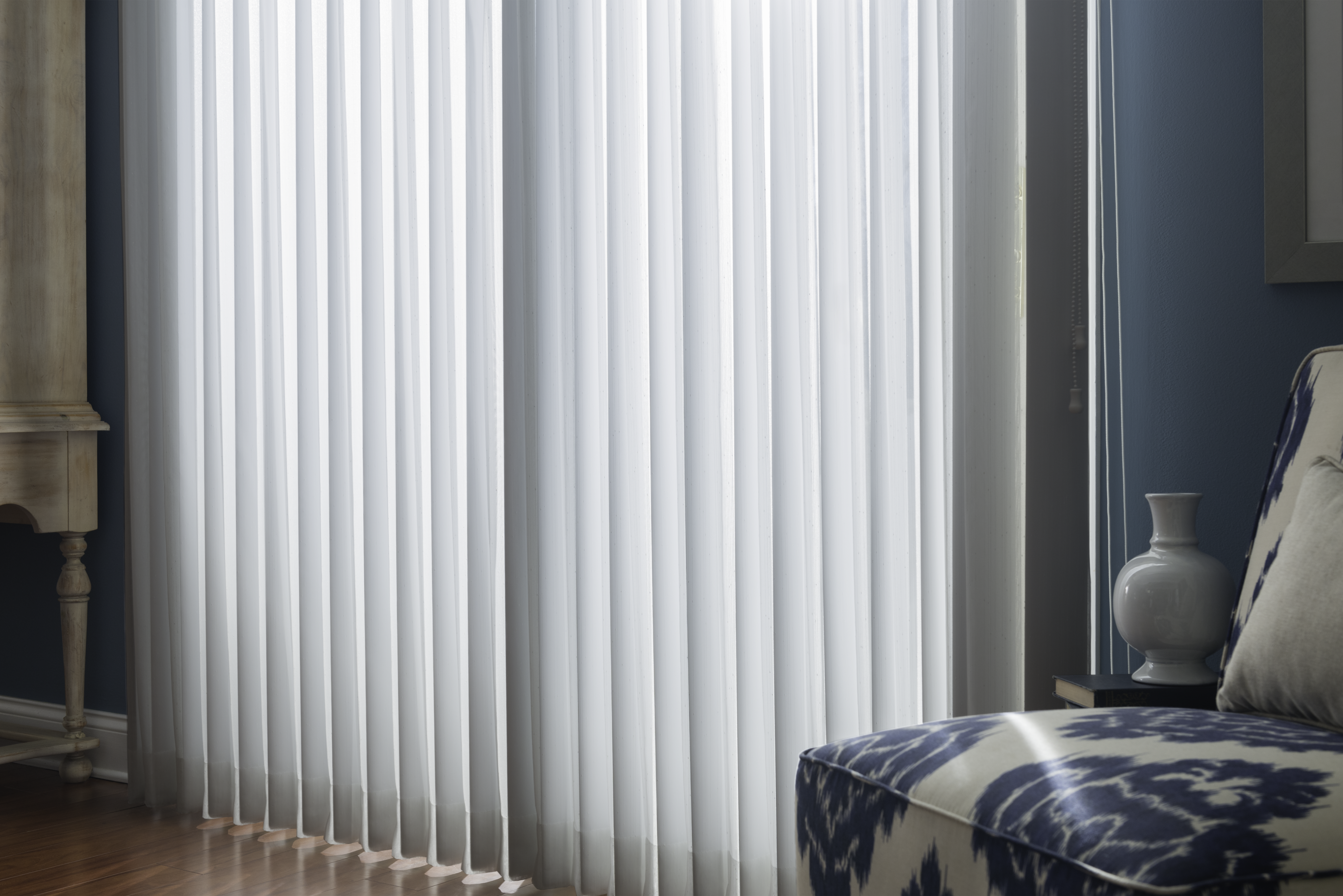
Vertical Blind Cleaning
Vertical blinds are a timeless window covering that provides privacy and light control on expansive windows or doors. Common materials include aluminum, faux wood, natural wood, and fabric. Clean vertical blinds when hanging by vacuuming them with a brush attachment, working from top to bottom and front to back. For fabric and vinyl blinds, use a dry sponge to spot clean.
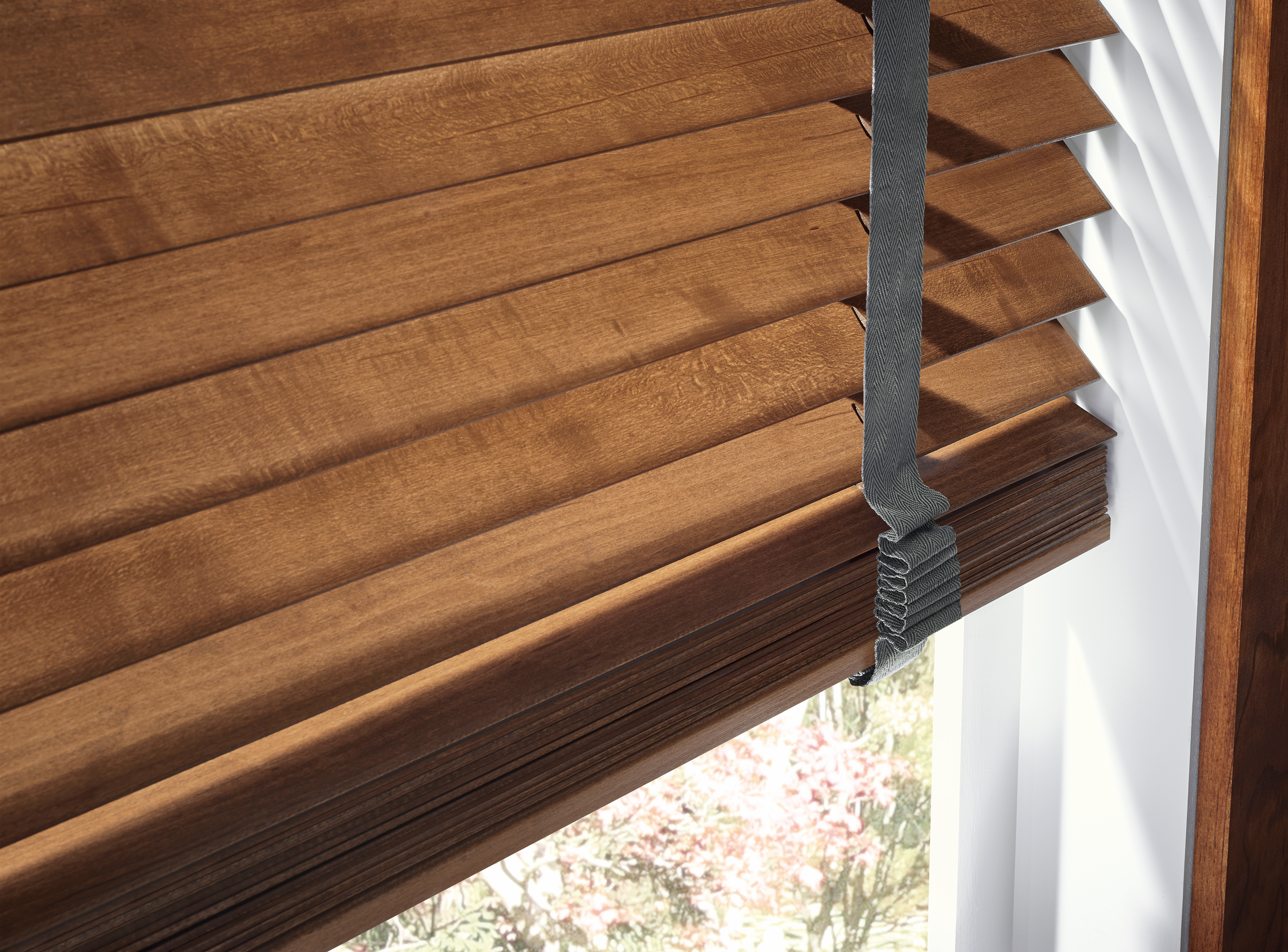
Cleaning Wooden Blinds
The first rule about cleaning wood blinds is not to use water, which can cause warping or discoloration. If you are looking for the best way to clean wooden blinds, a few different methods work well.
- Dusting – Dust blinds whenever you notice a layer of dust has formed. Use a soft cloth, dust mitt, feather duster, or clean sock.
- Vacuuming – For a deeper clean, vacuum your blinds gently with a soft brush attachment.
- Blowing – Use a can of compressed air or a hand-held hair dryer on the cool setting to blow off dust and debris.
Some people like using wood polish to keep their wooden blinds shiny and clean. If you choose to do this, do not spray the polish directly on the blinds. Instead, apply to a cloth first and gently wipe each slat.
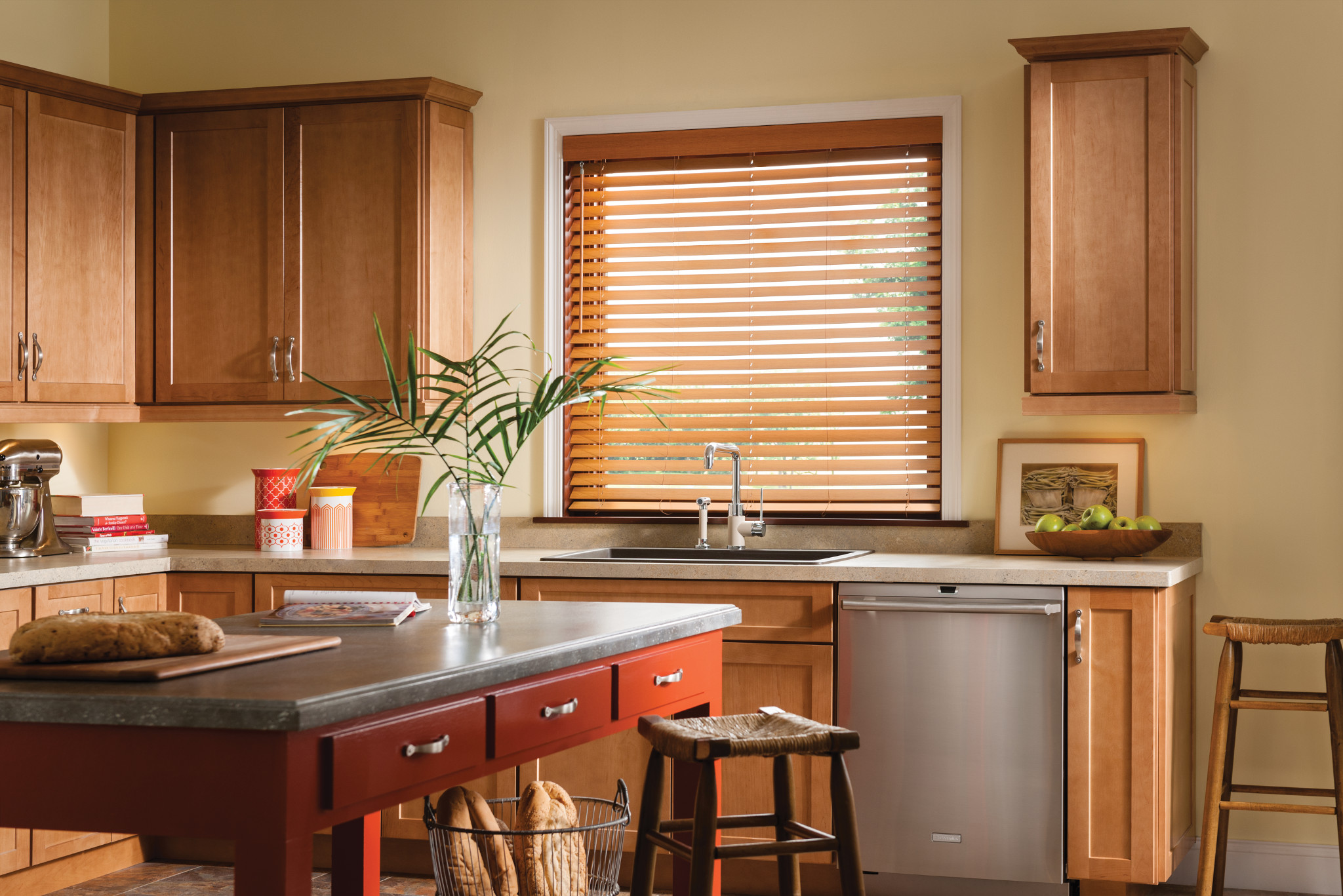
Cleaning Faux Wood Blinds
If you like the look of natural wood but prefer something more durable and easier to maintain, faux wood blinds are a great option. Made of composite PVC material, they are engineered to prevent warping, fading, cracking, and peeling.
If you are wondering how to clean faux wood blinds, you may use any methods of dusting, vacuuming, or blowing described above for wood blinds.
In addition, due to the more durable material, you may also use a spot-cleaning method on faux wood blinds. Use a soft cloth or sponge moistened with warm water and a mild detergent to clean stubborn spots.
Cleaning Aluminum Blinds
Aluminum blinds are another popular low-maintenance window covering. Many types even feature a dust-resistant finish to help cut down on blind cleaning frequency.
When it’s time to clean your aluminum blinds, you may vacuum them, gently dust them, or wipe them clean with a damp cloth and mild soap. For a deeper clean, remove blinds from the wall and soak them in a mixture of water and a mild detergent. Rinse thoroughly, then hang while open and extended until completely dry.
How to Clean Shades
Cleaning shades can significantly improve the look of your windows, the air quality in your home, and the life of your window treatments. This section will cover how to clean window shades of all kinds, including cellular, roller, Roman, and blackout shades.
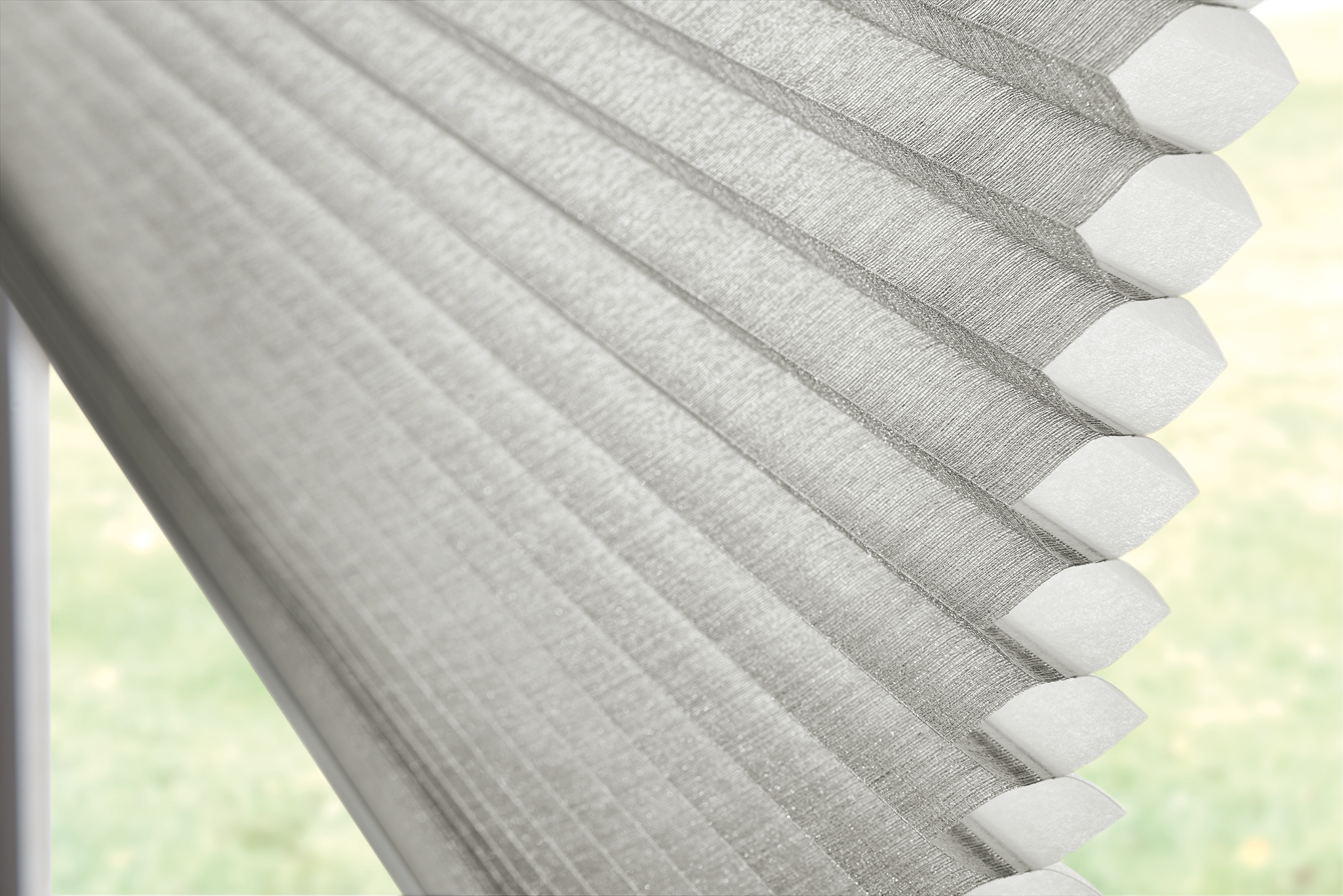
Cleaning Cellular Shades
Cellular shades, also known as honeycomb shades, are a customer favorite. But when learning how to clean cellular shades, many people need help figuring out where to start. Cellular shade cleaning is easier than you may think. They are made from a specially treated, easy-to-clean fabric that is wrinkle- and stain-resistant. Use any of these methods to keep your shades looking new.
- Vacuuming – Vacuum gently with a brush attachment.
- Blowing – Use a can of compressed air or a hand-held hair dryer on the cool setting to blow off dust and debris.
- Spot Cleaning – Use a sponge or a soft cloth moistened with lukewarm water and mild detergent to spot clean. Blot gently to avoid creasing or damaging the fabric.
- Ultrasonic Cleaning – When you need deep cleaning, ultrasonic cleaning is recommended for most, but not all, Honeycomb fabrics. We do not recommend this method for blackout fabrics.
- Injection/Extraction Cleaning – This specialized service involves injecting a cleaning solution into the fabric and extracting the dirty solution simultaneously.
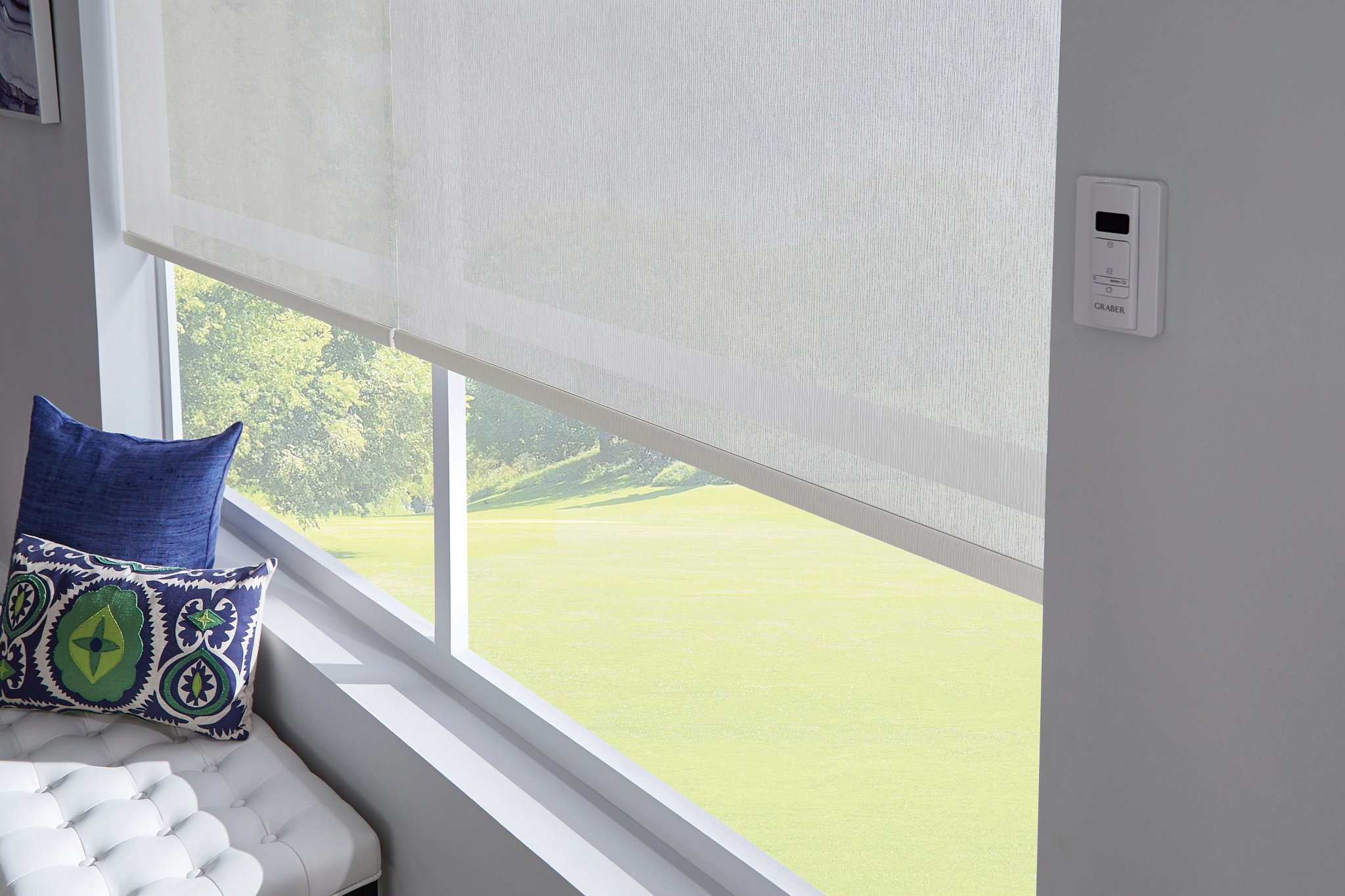
Cleaning Roller Shades
Do you have a buildup of dirt or dust on your roller shades? Their smooth surface makes cleaning them easy. Here are a few recommended methods for how to clean roller shades.
- Dusting – Dust your shades regularly using a soft, clean cloth, dust cloth or mitt, feather-like duster, or cylindrical dust brush specially designed for shades.
- Vacuuming – Vacuum gently with a brush attachment for deeper cleaning.
- Blowing – Use a can of compressed air or a hand-held hair dryer set on cool to blow off dust and debris.
- Spot Cleaning (screen and vinyl only) – Use a soft cloth or sponge moistened with lukewarm water and mild detergent. To avoid creasing or damaging the fabric, blot gently. Avoid using this method on delicate woven fabrics.

Cleaning Roman Shades
Roman Shades are a beautiful window treatment option that adds timeless elegance to any space. These flat fabric shades fold up in a graceful accordion fold and come in a wide variety of styles and colors. Because several fabric types can be used, there may be a difference in how to clean Roman shades of varying materials. Therefore, following cleaning instructions for your fabric type is essential to prevent damage.
In general, you can use these methods for cleaning fabric Roman shades:
- Vacuum with an upholstery brush attachment.
- Dust with a microfiber cloth or a new duster.
- In the event of a spill or stain, immediately blot the fabric with club soda and a cloth to prevent it from setting.
Cleaning Blackout Shades
Blackout shades are often used in bedrooms and media rooms to block out light and provide ultimate privacy. While they are not likely to get heavily soiled, they can accumulate dust and dirt over time. Cleaning instructions for blackout shades may vary depending on the specific material and design of the shade. Generally, most shades can be cleaned by vacuuming with an upholstery attachment or using a soft sponge, mild soap, and water.
How to Clean Curtains
Custom curtains and draperies provide endless design options to create the perfect look in your home. However, with many fabric options also come varying cleaning methods. Therefore, knowing what kind of fabric you have is crucial to understand how to clean your curtains. For example, some materials are machine washable, some must be hand washed, and some may be dry cleaned only.

Other times, your curtains may need a quick freshening up. In that case, you can use a hand-held steamer to remove wrinkles and make them look smooth again. This method is an excellent alternative to ironing. Hold the steamer at least eight inches away and keep moving to prevent fabric damage.
Cleaning Top Treatments
Valances and cornice boxes add the perfect finishing touch to window treatments. But they can also attract dust and dirt and require proper cleaning and maintenance to keep them looking their best. Most top treatments can be cleaned easily by vacuuming, dusting, or spot cleaning.

Cleaning Blackout Curtains
Blackout curtains are made from tightly woven dense materials that almost completely block out light. Because of this, many people are unsure of the best way to clean them. Most blackout curtains can actually be washed in a washing machine. However, it’s important to check the care instructions on the label first.
Cleaning Sheer Curtains
Sheer curtains and draping are light, airy, and often delicate. While some fabrics are machine washable, many types should be washed by hand. Follow all care instructions provided to keep them in top shape.
Sheer curtains can be vacuumed clean using a brush attachment and small gentle strokes.
To hand wash, fill a bucket or tub with water and add a mild detergent. Next, remove the curtain panels from the wall and submerge them one at a time, allowing them to soak for 10 minutes each, then gently swirling to clean. Finally, drain the water from the tub, rinse each panel well, and hang it to dry.
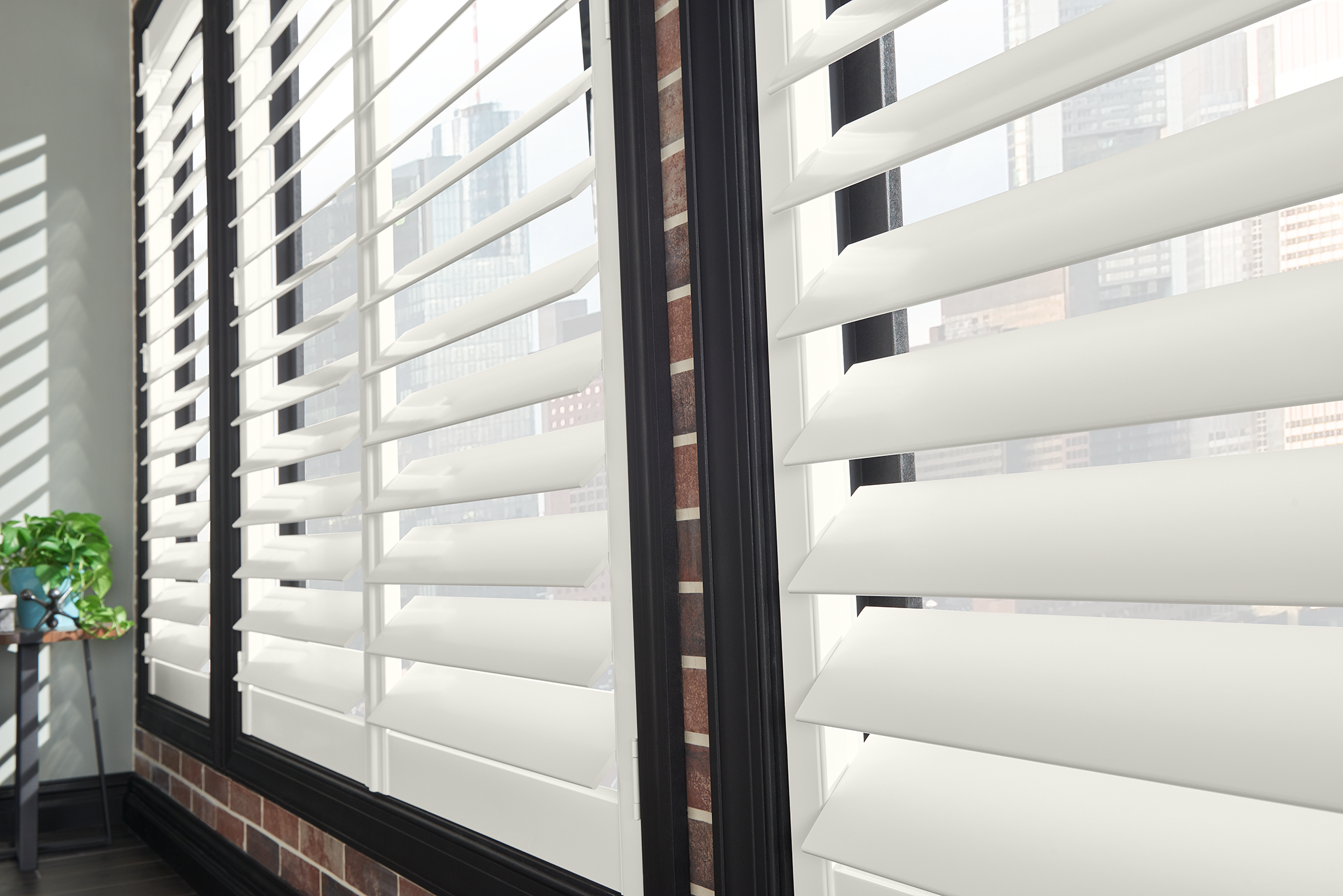
How to Clean Shutters
Plantation shutters are an elegant addition to any room of your home. They not only provide a beautiful and warm style, but they are also extremely durable. Whether made from wood or composite, shutters are also easy to clean and maintain. Learn how to clean plantation shutters here.
Cleaning Wood Shutters
Like wood blinds, you should avoid using water when cleaning wood shutters. Instead, you can use the same cleaning methods of vacuuming, dusting, or blowing the dust away. Perform a light cleaning regularly to keep shutters looking new.
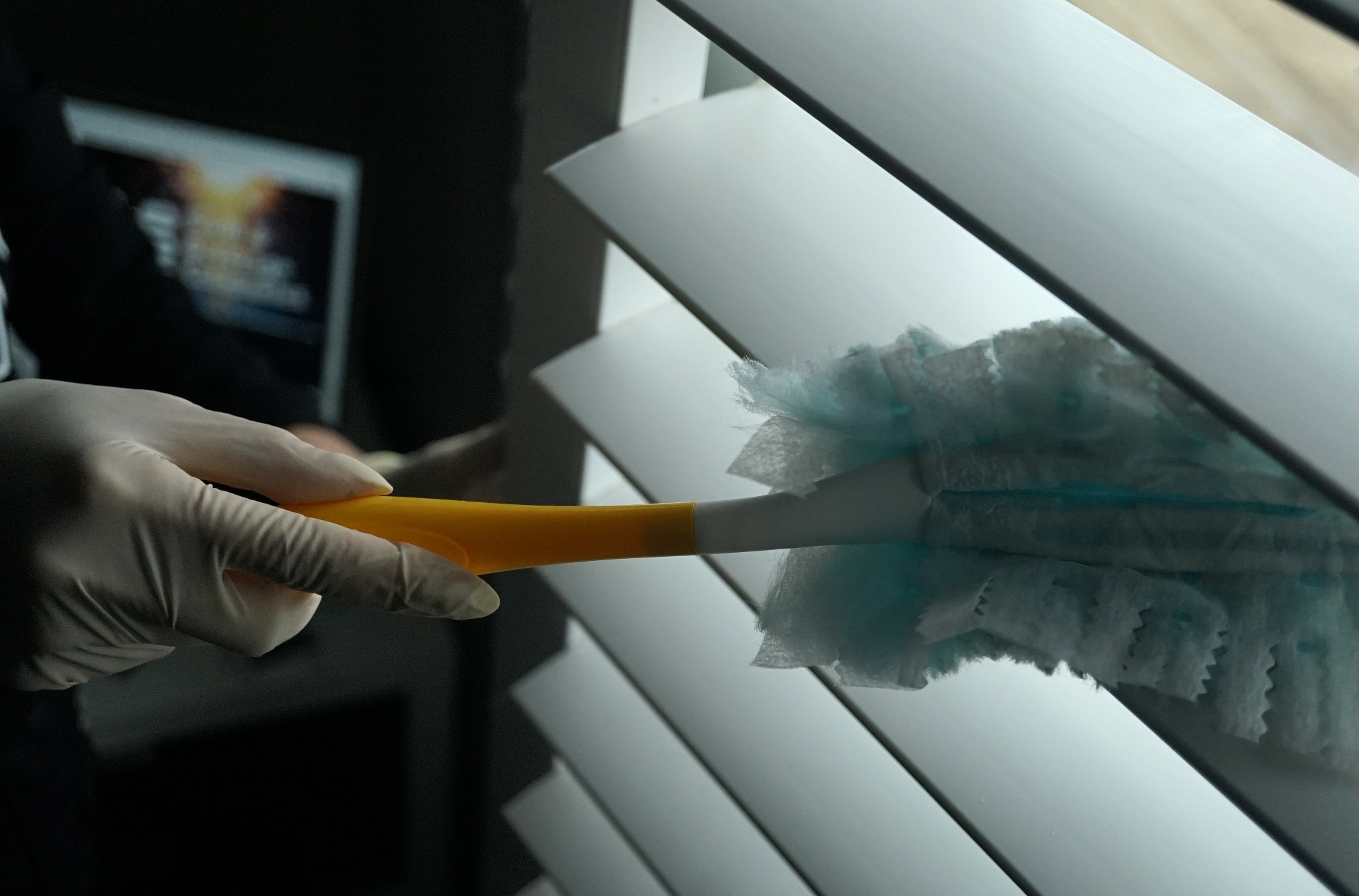
Cleaning Faux Wood Shutters
Composite or faux wood shutters are resistant to stains and moisture, so they are ideal for use in bathrooms and kitchens. This also means that in addition to dusting and vacuuming, you can spot-clean or deep-clean by wiping them down with a damp cloth and mild soap when needed.
Window Treatment Cleaning Tips
Each room of your home has a different function and, along with it, different cleaning needs. Next, we’ll share window treatment cleaning tips for each room of your home to tackle everything from stubborn stains and odors in the kitchen to dust in the bedroom.

In the Kitchen
It is essential to regularly clean your kitchen window treatments, as they can collect grease and food particles. The best window treatments in the kitchen use durable materials and stain-resistant fabrics that can be cleaned easily. For example, roller shades with a PVC coating or faux-wood blinds or shutters are excellent choices that can be easily wiped clean with a damp cloth or sponge. Meanwhile, draperies are not the best choice because they can easily absorb odors and are harder to clean.
In the Bathroom
Waterproof window coverings are very popular in the bathroom. Faux wood blinds or shutters are made from vinyl or composite material that can withstand high moisture and humidity. To prevent mold and mildew, make sure your bathroom is well-ventilated. Choose moisture-resistant materials that are easy to clean, and clean often. Lastly, don’t leave wet towels or clothing near your window treatments.
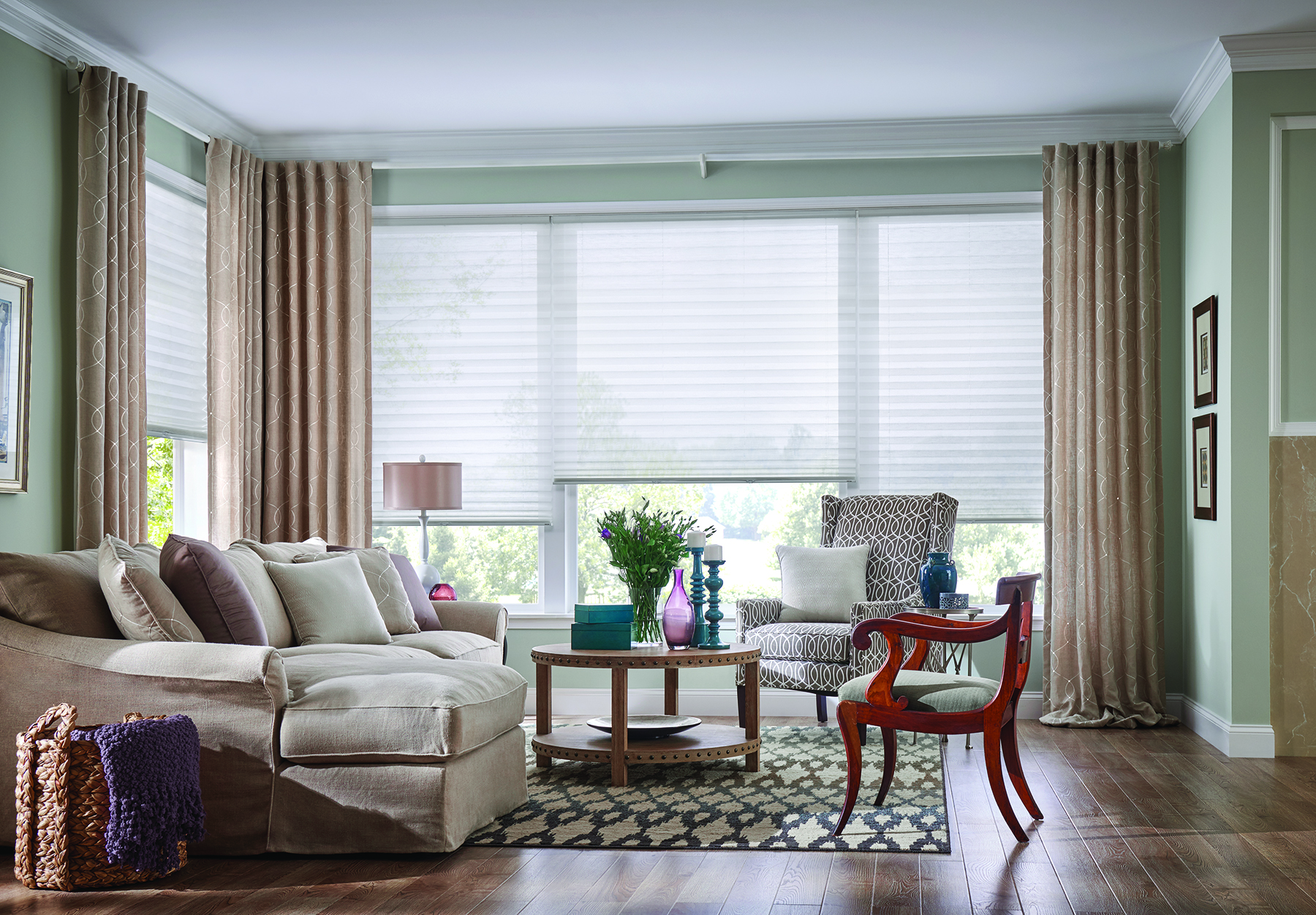
In the Living Room
There is less need to consider durability and ease of cleaning in the living room. Instead, most people focus on design and function, which opens up many more possibilities. Choose one type of covering or layer them for the perfect look, privacy, and light control for your space.
When cleaning the living room, follow the recommended guidelines for your type of window treatment. Clean them lightly as often as you dust or vacuum the rest of your living space, and consider a deeper cleaning once a year to keep them fresh and bright.
In the Bedroom
When selecting window coverings in the bedroom, the most important features to consider are privacy, light control, and aesthetics. For this reason, many people prefer to use layered window treatments, combining shades, blinds, or shutters with curtains or draperies.
If you are looking for a low-maintenance window covering for the bedroom, consider Roman shades in an easy-to-clean material. While blinds or shutters take a little more time to dust each surface, fabric shades can be quickly vacuumed clean with a soft brush attachment.

If you need help determining how to clean your window treatments, contact 3 Blind Mice Window Coverings! Whether you have questions about an existing product or are shopping for new window coverings, our experts are a great source of help and information.
